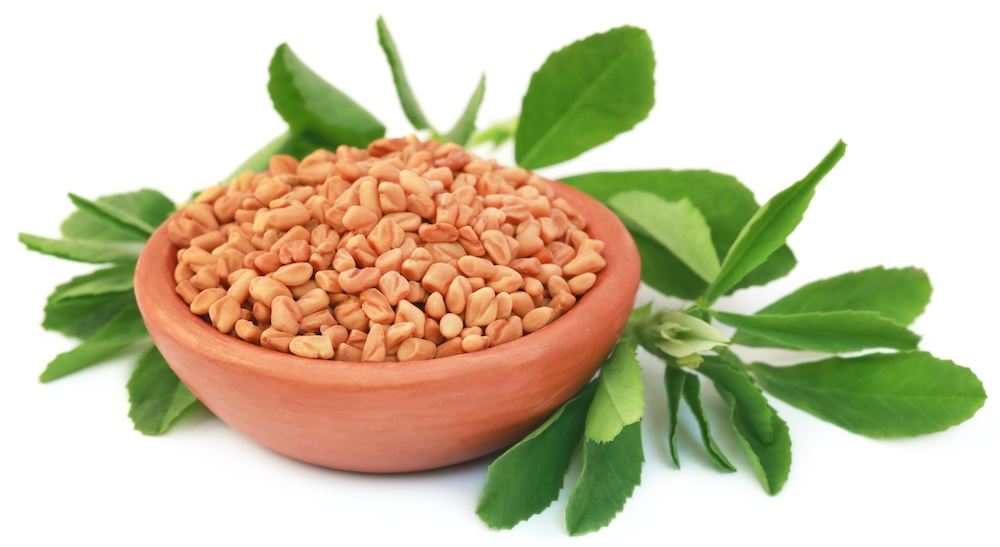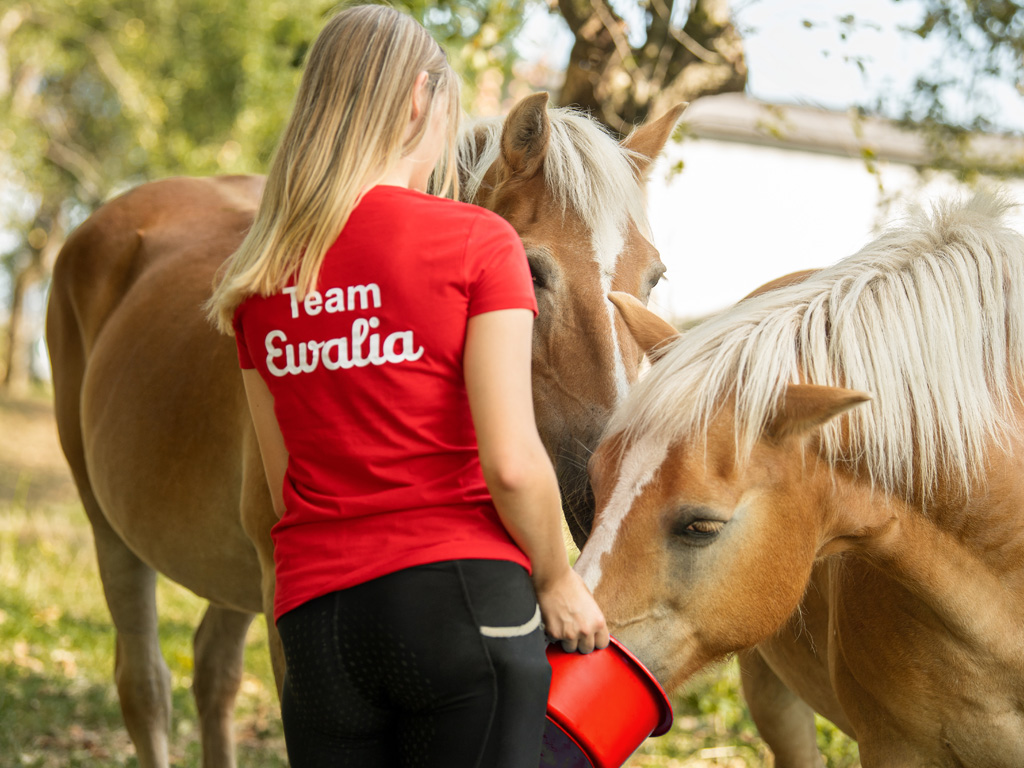Fenugreek

The name fenugreek (Trigonella foenum-graecum) comes from the old French fenugrec, in turn from the Latin faenum Graecum, literally meaning "Greek hay". The seeds' valuable substances include mucilage which helps to reduce irritations to the stomach lining and alleviate stomach ailments.
Where does fenugreek come from, and what does it look like?
Fenugreek is an annual that grows between 10 and 50 cm high and probably originated in the Indian regions of Kashmir and Punjab. It may have also been native to what is now Iran as well as some regions of southern Europe. Its botanical name foenum-graecum, meaning "Greek hay", suggests that fenugreek was brought by way of Greece to Europe where it still grows wild in warm, dry environments. Another interpretation is that Greek farmers fed this vitamin-rich herb to their livestock.
Fenugreek belongs to the legume family, which also includes such medicinal herbs as liquorice, restharrow, and red clover. Blue fenugreek, which has similar effects to fenugreek, is a plant from the genus Trigonella that is native to Central Europe.
The plant has round, upright stems and always forms three leaves on each petiole, similar to clover. The leaves are long and ovate with serrations at and around the tips. Between May and July, the fenugreek plant puts out mostly yellow, sometimes white or light purple blossoms which consist of two mirror-image parts.
The flowers ripen into long, thin, green pods containing up to 20 yellowish or ochre-coloured seeds.
What is fenugreek used for?
Fenugreek is an important culinary herb in its place of origin. The ground seeds are an essential component for curries and bread seasonings. The vitamin-rich sprouts can be served in salads.
The mature seeds are dried for use in phytotherapy. The seed kernels have a typical, intense aroma caused by sotolon, a substance also found in lovage. The seeds have a slightly salty taste and become bitter and slimy when chewed. Used whole or crushed, they can be prepared as teas and extracts. Crushed fenugreek seeds and fenugreek powder can be mixed with water to make a paste for external application as well.
Caution: Ground or crushed fenugreek seeds and powders do not keep for long periods!
Fenugreek has long been used as a medicinal plant throughout India and North Africa. It was used during pregnancy and nursing, as well as to treat skin problems, swollen legs, and gastrointestinal ailments. In ancient Europe, "faenum Graecum" was mainly used as incense. In the late Middle Ages it was promoted as a medicinal plant by Hildegard von Bingen – mainly for external use, for example to treat head rashes, dandruff and haemorrhoids. Ground up and boiled in vinegar or water, the seeds were also taken internally to treat dysentery and nondescript stomach pains, as well as to promote hair growth and as a tonic. Father Sebastian Kneipp was convinced of fenugreek's effectiveness in treating ulcers and tumours.
The plant was also administered in powdered form to cows to increase milk production. In equine medicine it is used in formulas for treating strangles, bronchitis and laryngitis.
What substances are contained in fenugreek?
Fenugreek seeds are 25–40% mucilaginous substances which protect and sooth irritated mucosa. The seeds contain B vitamins, vitamin C and D and fatty oils. They also have a high mineral content. Much of the plant contains alkaloids (basic substances), flavonoids, and saponins (secondary plant substances) as well as tannins. The seeds' secondary substances are said to have antibacterial and antioxidant effects. They contain histidine, an amino acid that is said to counteract liver damage.
Studies have shown that the diosgenin in fenugreek has antimicrobial and tumour-inhibiting properties.
No evidence has yet been provided for fenugreek's assumed efficacy in insulin resistance in the muscles and liver and its presumed regulatory effects on elevated insulin and blood sugar levels.
What equine ailments can fenugreek be used to treat?
Fenugreek shows quite positive effects on gastrointestinal ailments. It promotes secretion from the gastric and intestinal glands as well as bile production, stimulating the horse's appetite. The mucilaginous substances in fenugreek act as a protective film on irritated gastric mucosa and can help to prevent further irritation.
Fenugreek seeds can be made into warm poultices for external application.
Fenugreek poultices can disinfect and sooth irritations in the hoof area, skin infections, festering wounds, and ulcers.
Side effects:
The use of fenugreek is generally considered safe.
Caution: Do not feed fenugreek to animals with allergies to Faboideae plants! Some countries have regulations stipulating the discontinuation of fenugreek 48 hours before competition – it is recommended that you enquire about such regulations in advance!
Sources and further reading
- Alban, S. (2011). Bockshornkleesamen. Deutsche Apotheker Zeitung, S. 42. Von Bockshornkleesamen: https://www.deutsche-apotheker-zeitung.de/daz-az/2011/daz-30-2011/bockshornkleesamen abgerufen
- Brendieck-Worm, C., & Melzig, M. F. (2018). Phytotherapie in der Tiermedizin. Stuttgart: Georg Thieme Verlag KG.
- Purle, T. (28. 01 2020). Das Kräuterbuch. Von Bockshornklee: https://www.kraeuter-buch.de/kraeuter/Bockshornklee.html abgerufen
- Reichling, J., Gachnian-Mirtscheva, R., Frater-Schröder, M., Di Carlo, A., & Widmaier, W. (2008). Heilpflanzenkunde für die Veterinärpraxis. Berlin-Heidelberg: Springer Medizin Verlag.













